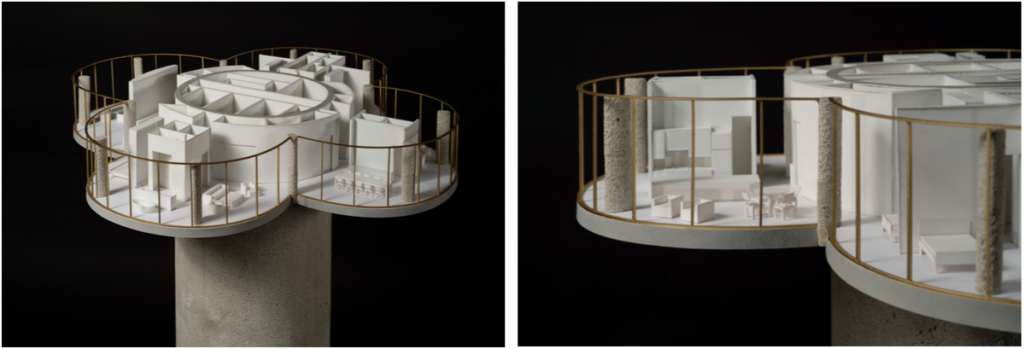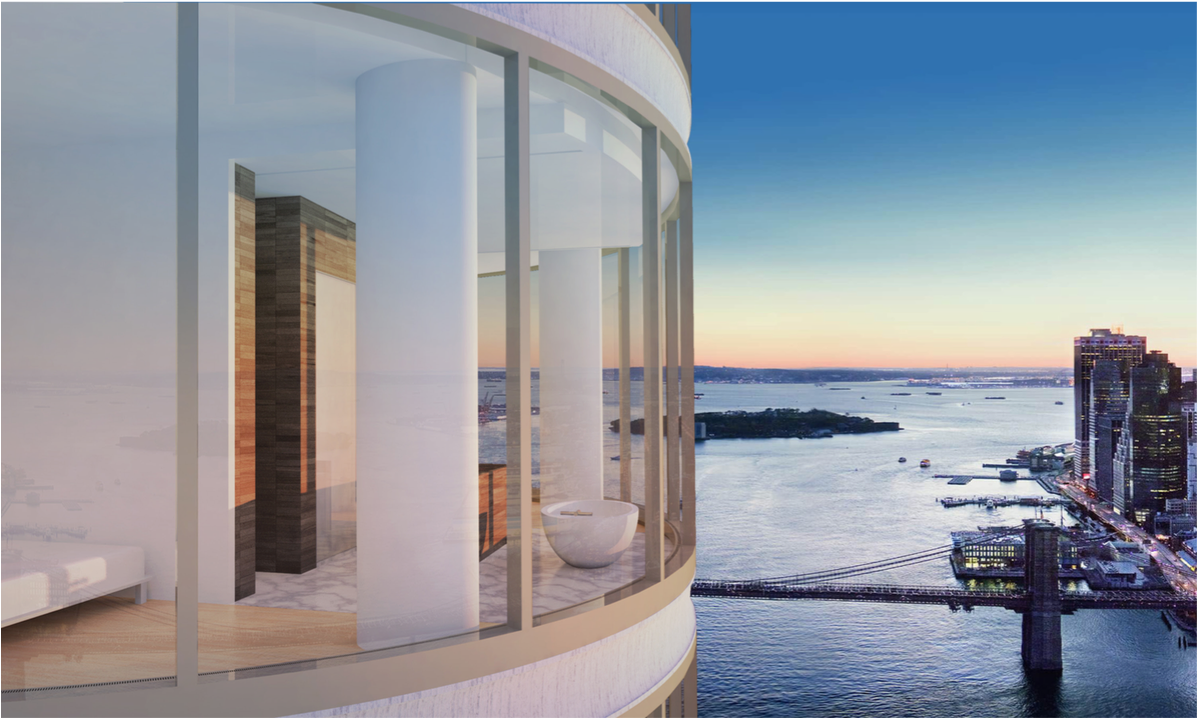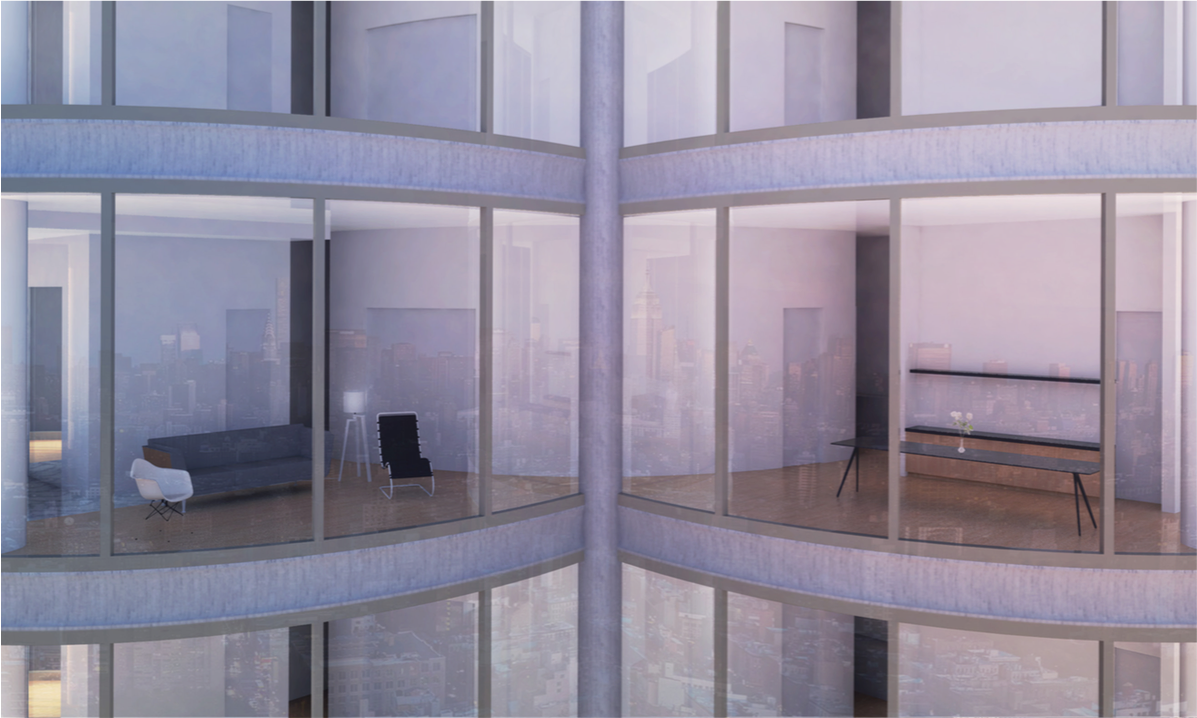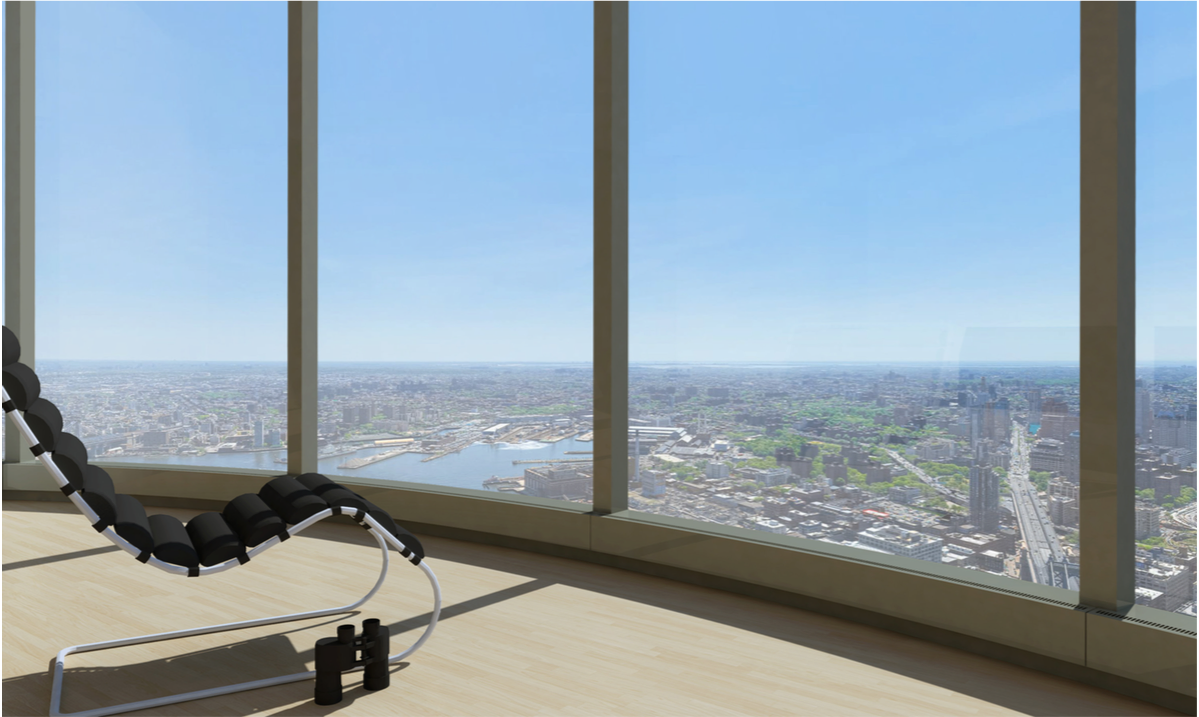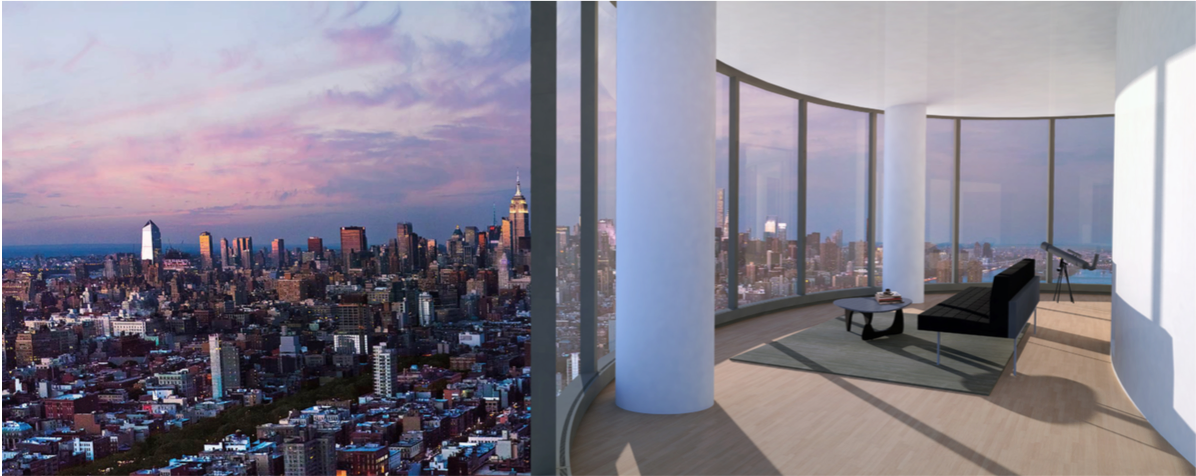“286 South” and the Essential Role of Architects
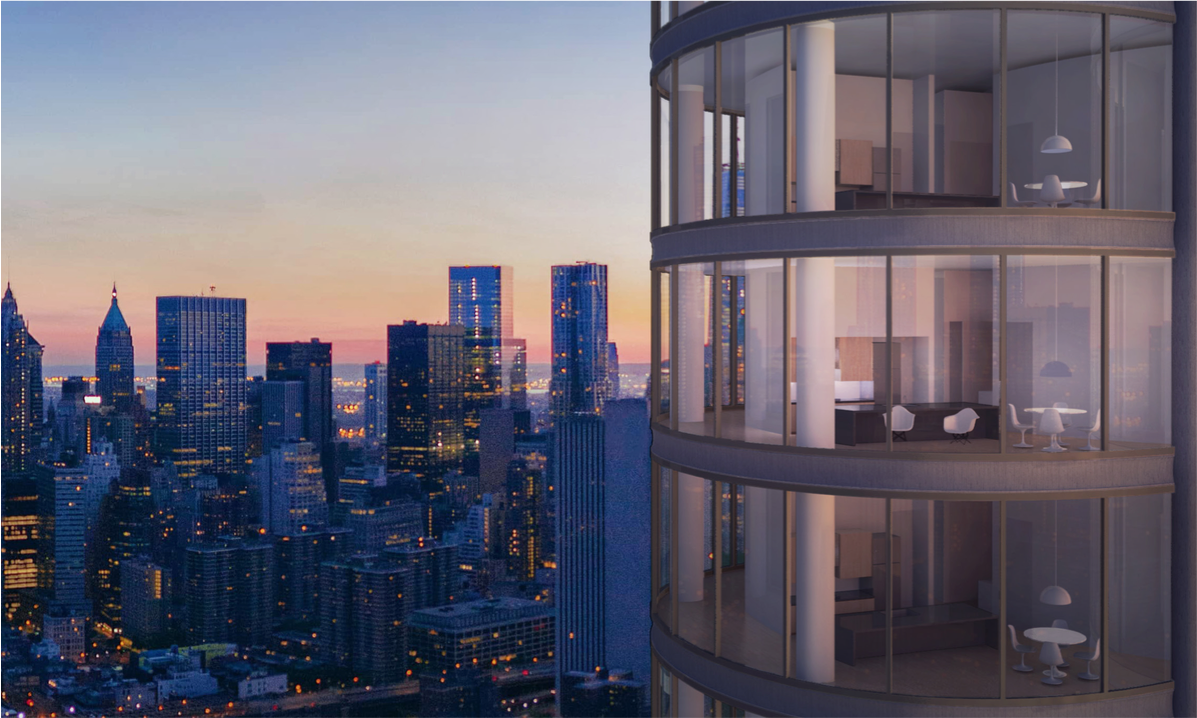
“286 South, defying the laws of luxury one sunset at a time”
by Benjamin Halpern (MArch ’17)—Winner of the 2017 Clifford Wong Prize in Housing Design
This project is not about universal housing or good-for-society housing—the types that typically win such awards as the Clifford Wong Prize. This project is about super-luxury housing.
Yet this project is also about “the essential role of architects”—to design with creative agency for housing of any type. And thus, this project should be judged not only by what it does for the specific inhabitant, but also by what it does for the discipline of architecture.
Context
Over the past decade in New York City, aggressive and creative real estate developers have seen a window for profit in very tall, very slender residential buildings that offer spaciousness, exclusivity, amenities, and, above all, spectacular views. This new typology of pencil towers induces in me equal parts amusement, enticement, and distress, as architects have been reduced to brand-name service providers.
We as architects—and I mean critical architects, especially in the academy—have two options: turn our backs to the entire practice, or accept it as a superlative reality of late capitalism and design within it. The challenge is how to recover a sense of criticality when all resistance seems to be futile.
Critique without action is not enough. The tools of design are used to inject an agenda within an industry that has marginalized this essential role of architects.
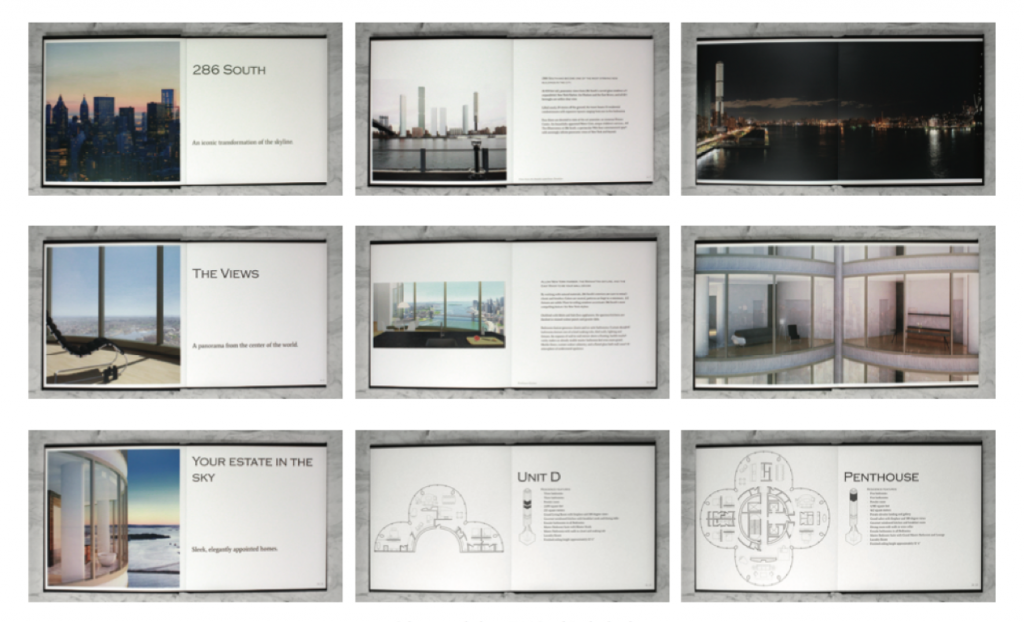
Agenda
To sell real estate in this new typology, developers are directing their marketing psychology towards a distinct clientele predicated on the views. Owning a condo in the sky is owning that panoramic view of the city, and the materials created by marketing companies claim to offer the entire unobstructed panorama.
Through the design of “286 South,” a multi-family residential tower in lower Manhattan, this project explores the contemporary idea of panorama — split between an easily accessible, static view for sale and an embodied, dynamic form of vision. For the developer, I must glorify the uninterrupted widescreen view. But as an architect, I must redefine the panorama through embodied discovery. Thus I operate like a wolf in sheep’s clothing — it would seem I am designing for views, but my agenda is to design for vision.
Through the design of housing, it is the architect’s duty to elevate the living environment beyond the basic necessities of providing shelter. Working with the unique conditions and contexts afforded by this typology, the design has the potential to affect a more complete sensory experience for the inhabitant. By privileging an embodied practice of vision, this project forms a deep link between the way we see and the way we live. After all, seeing mediates the exchange between us and our surroundings. In these terms, “286 South” expands the possibilities within a contemporary housing type rarely afforded a critical eye.
